
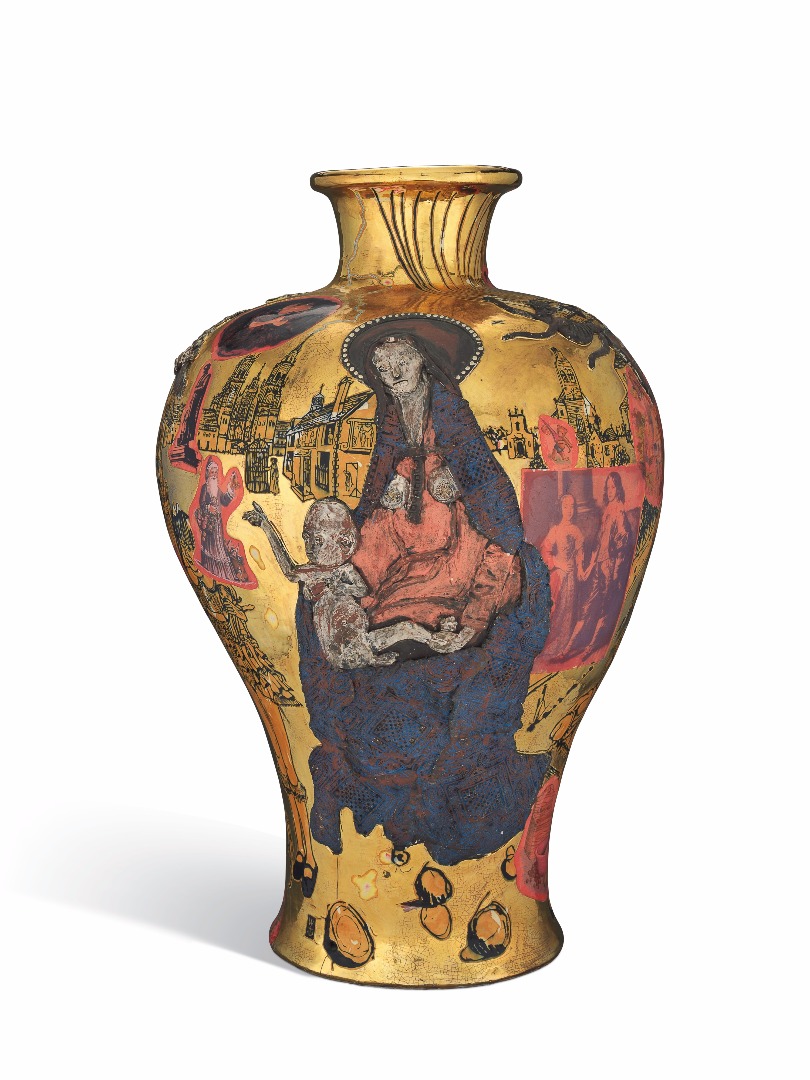
.jpg)
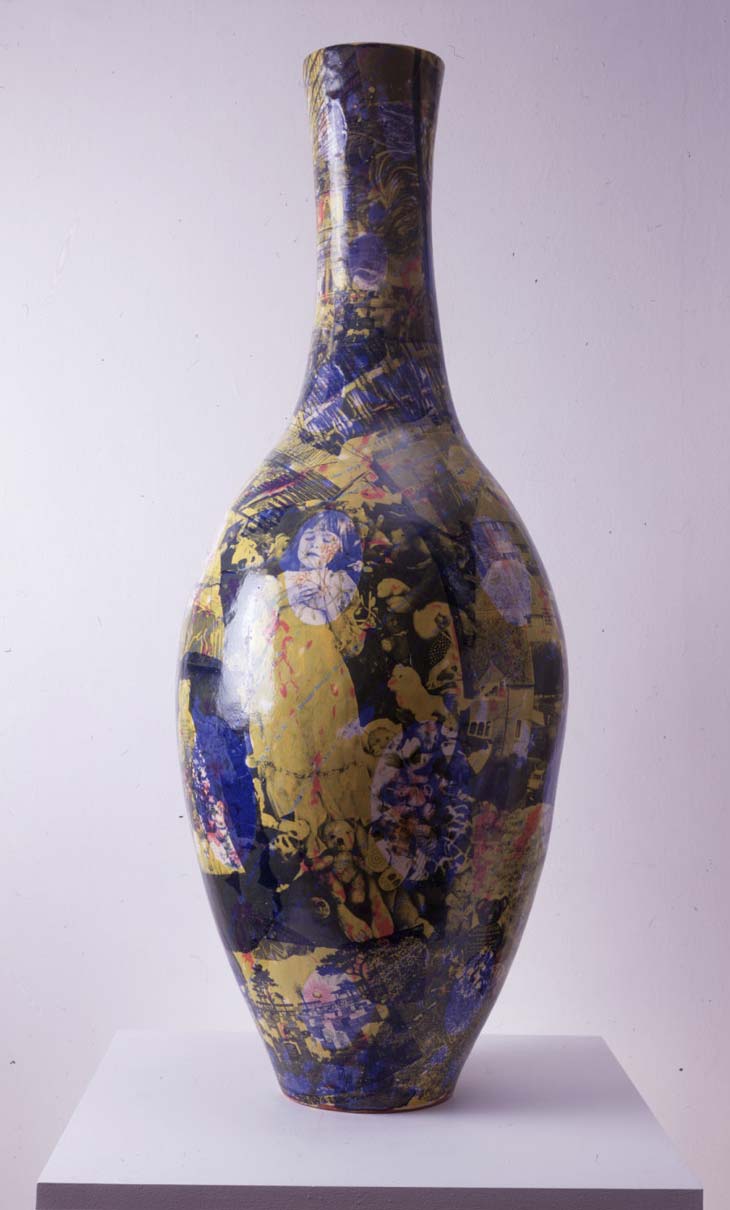
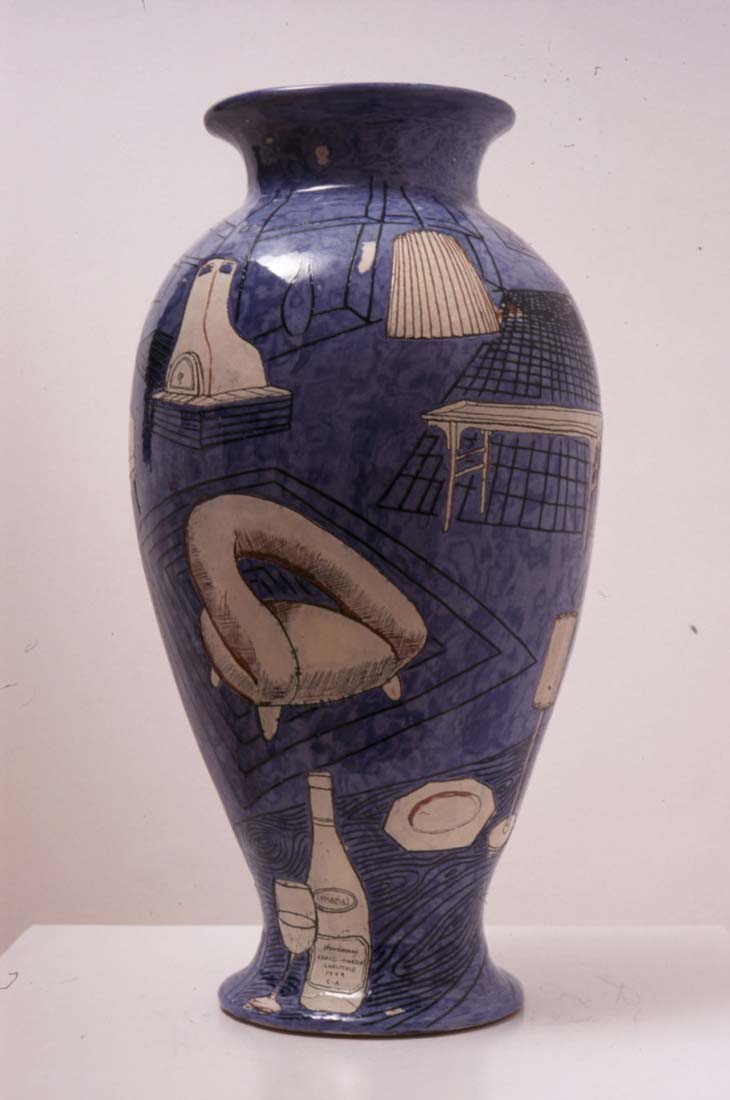
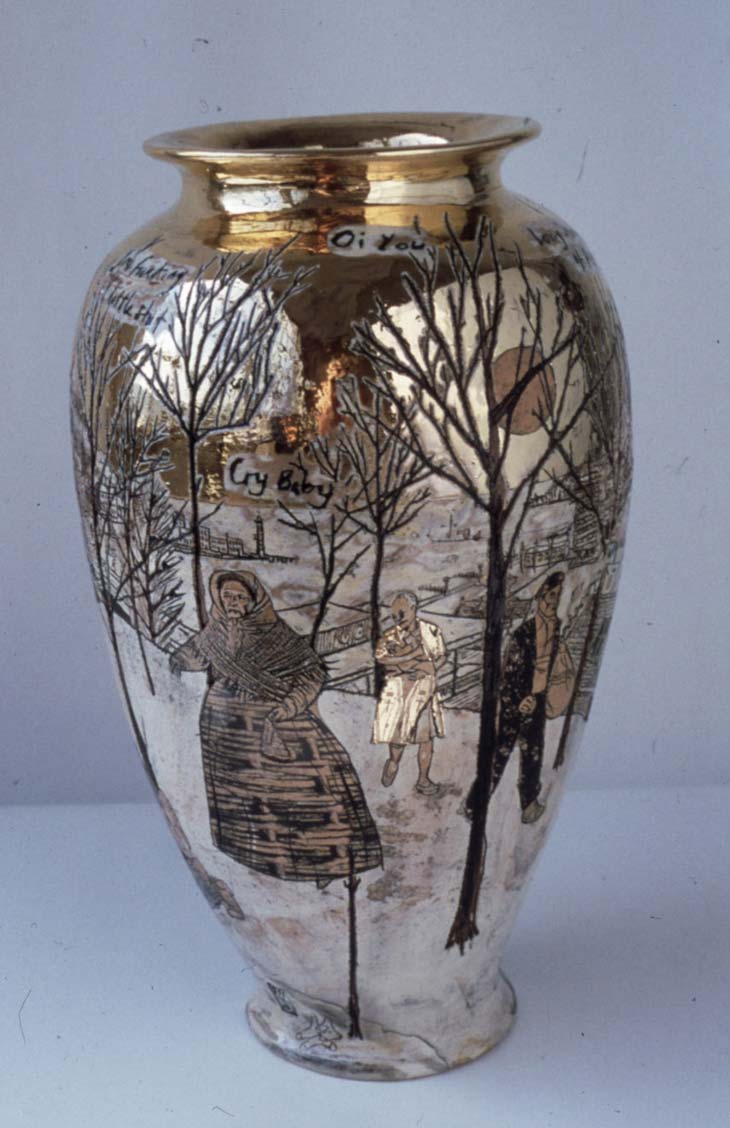
.jpg)
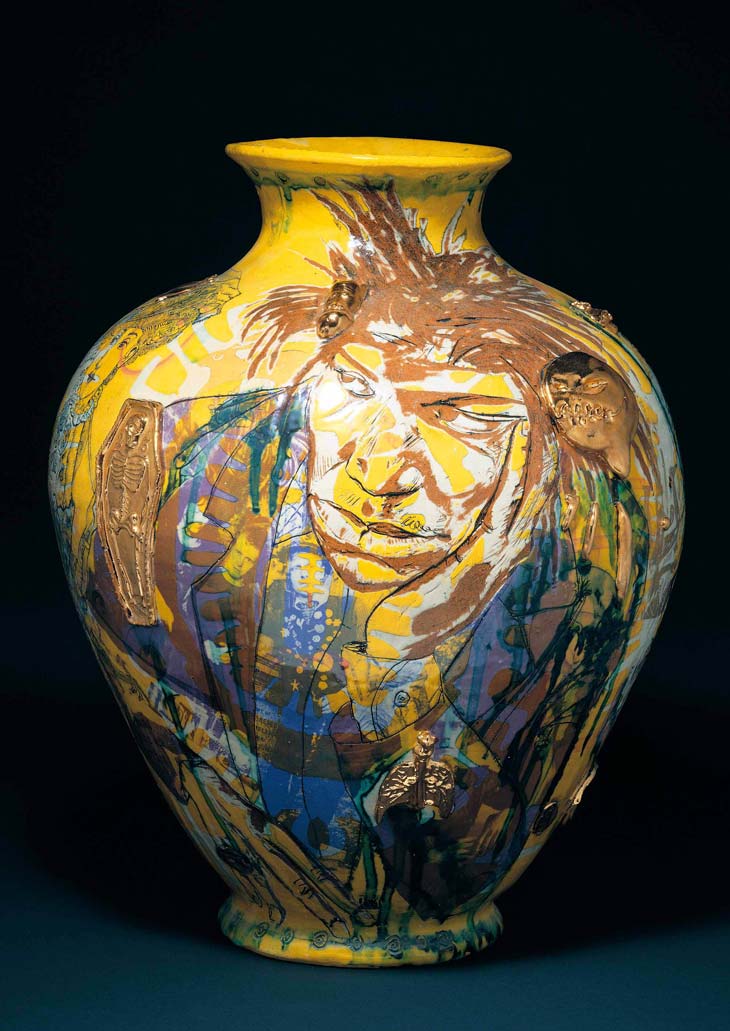

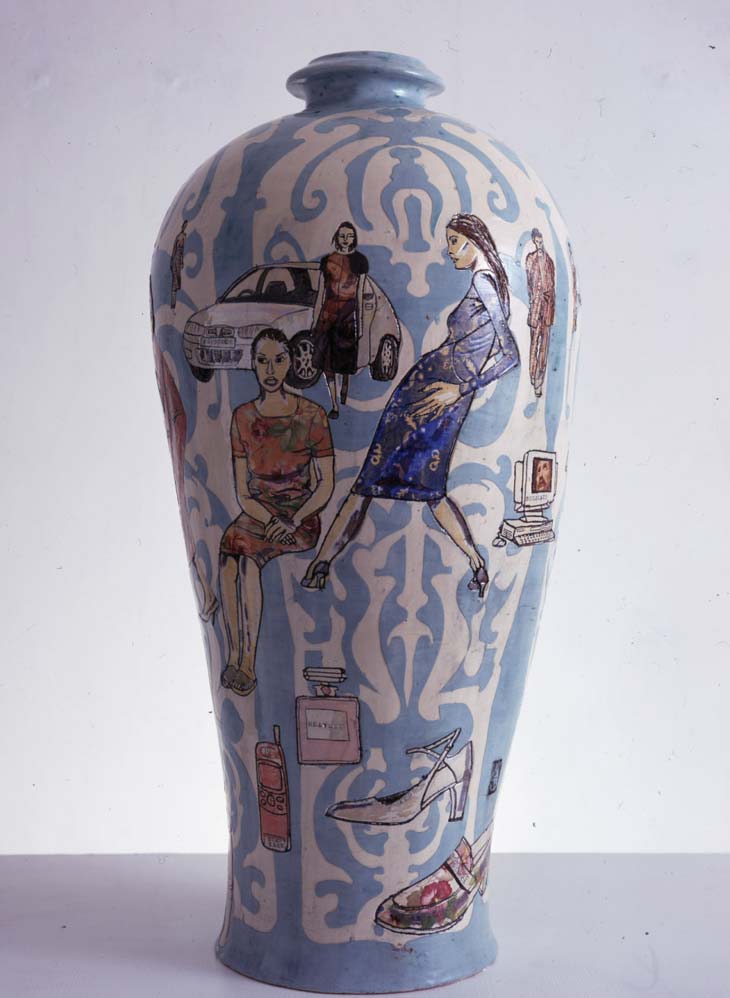
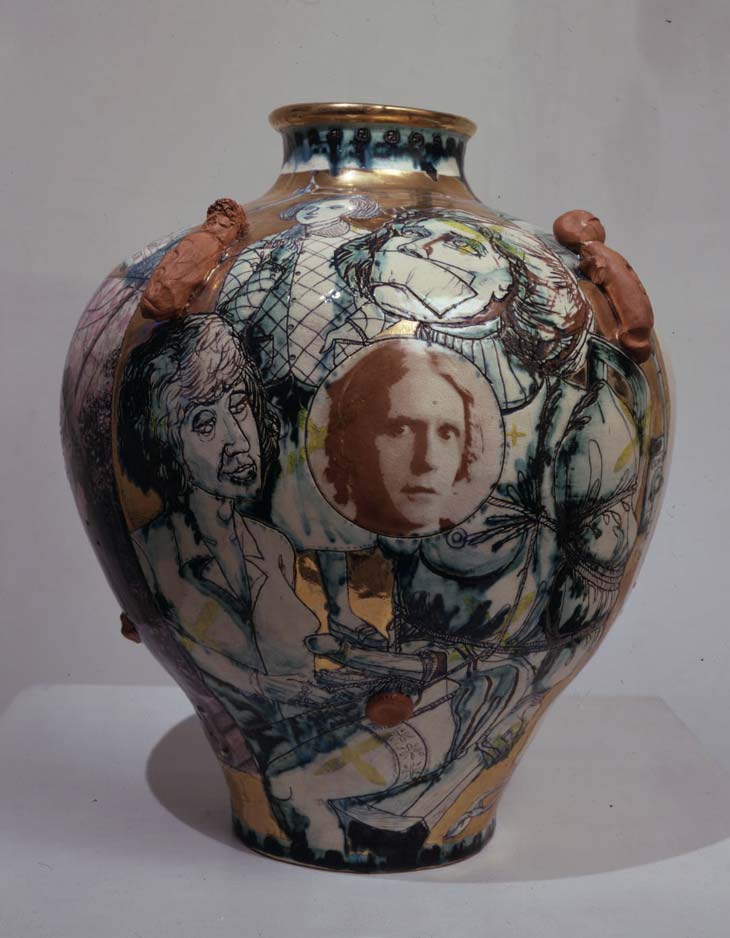
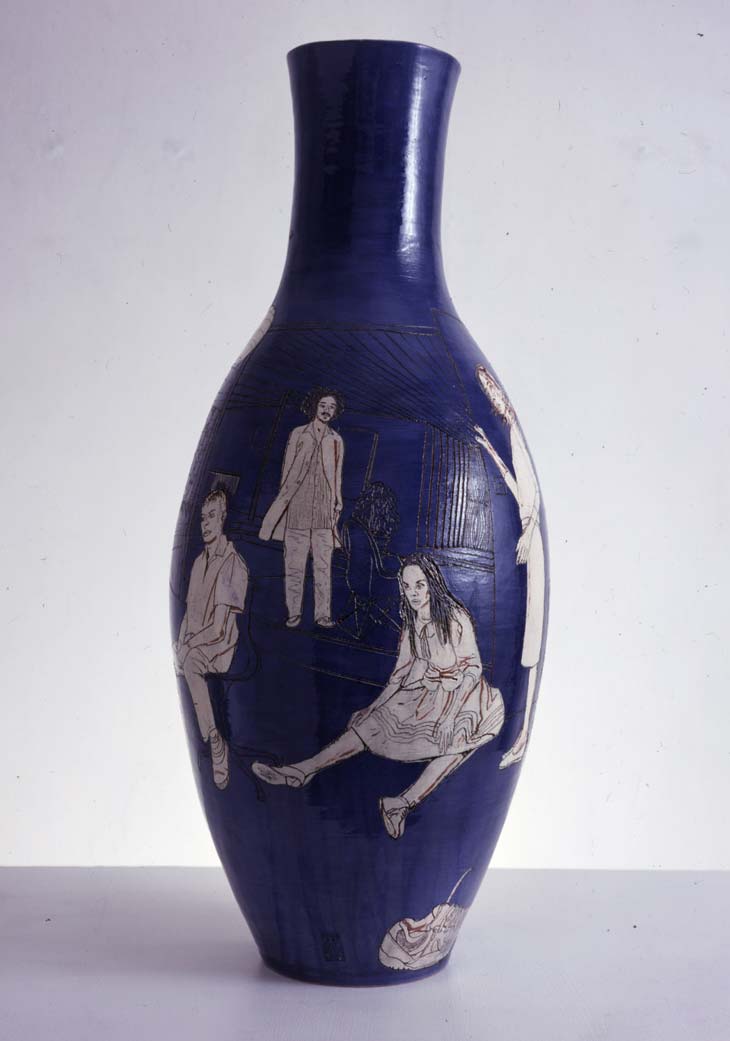
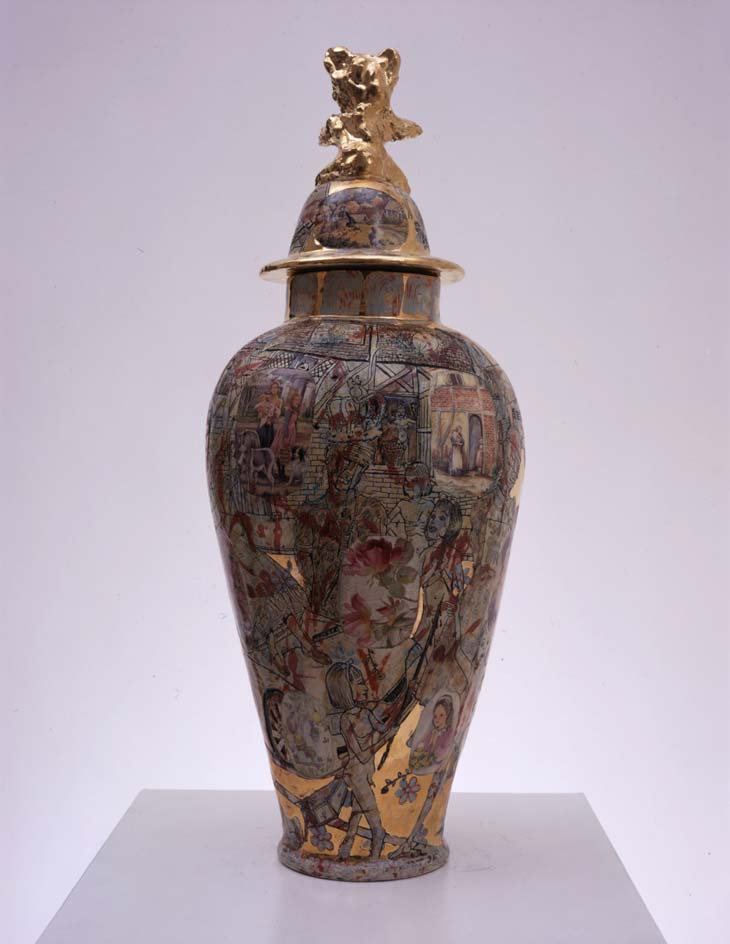
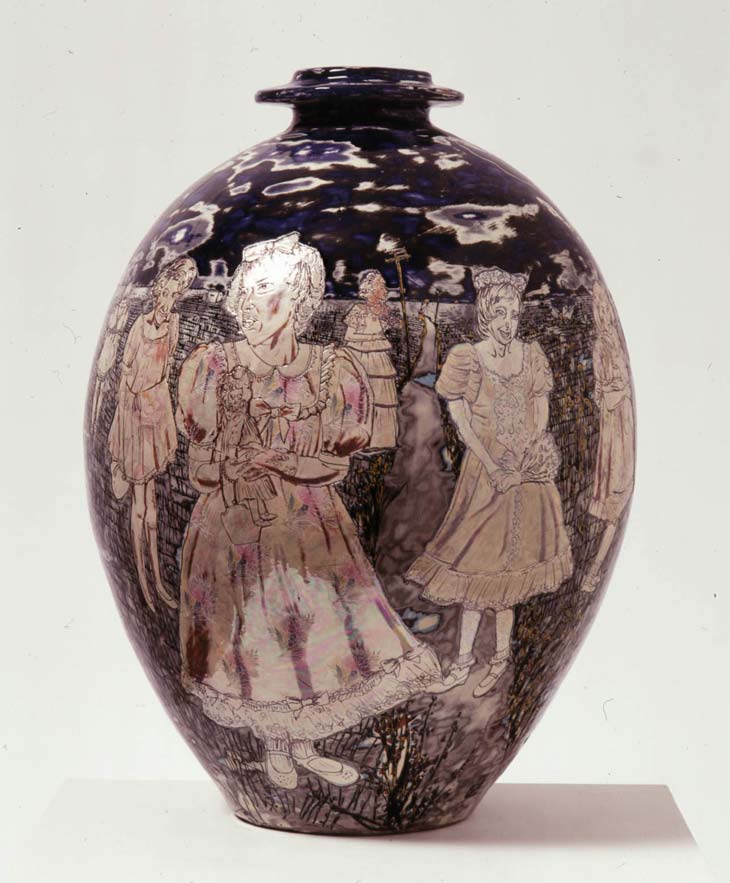
.jpg)
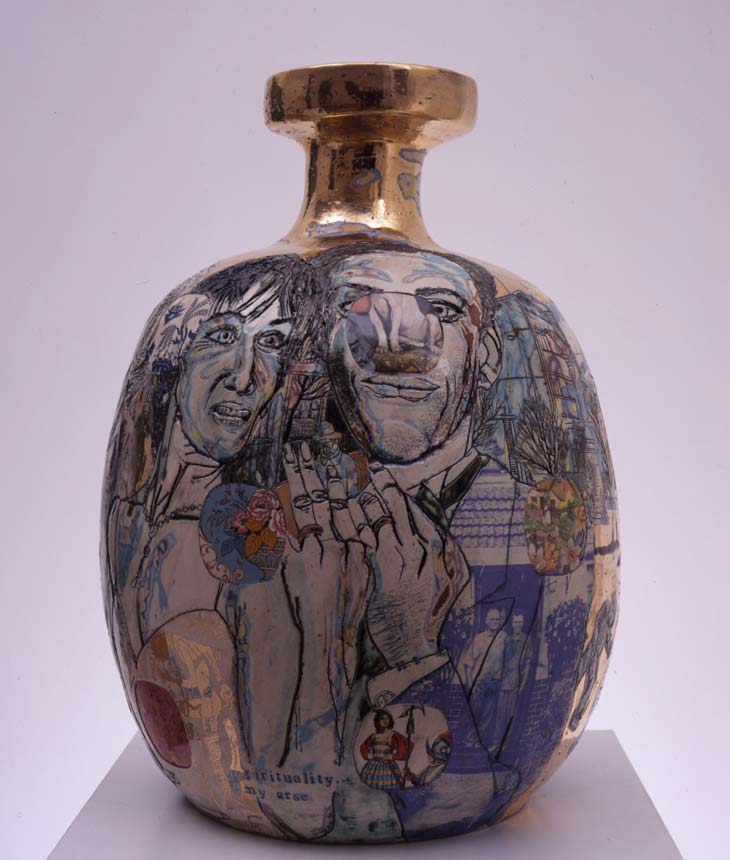
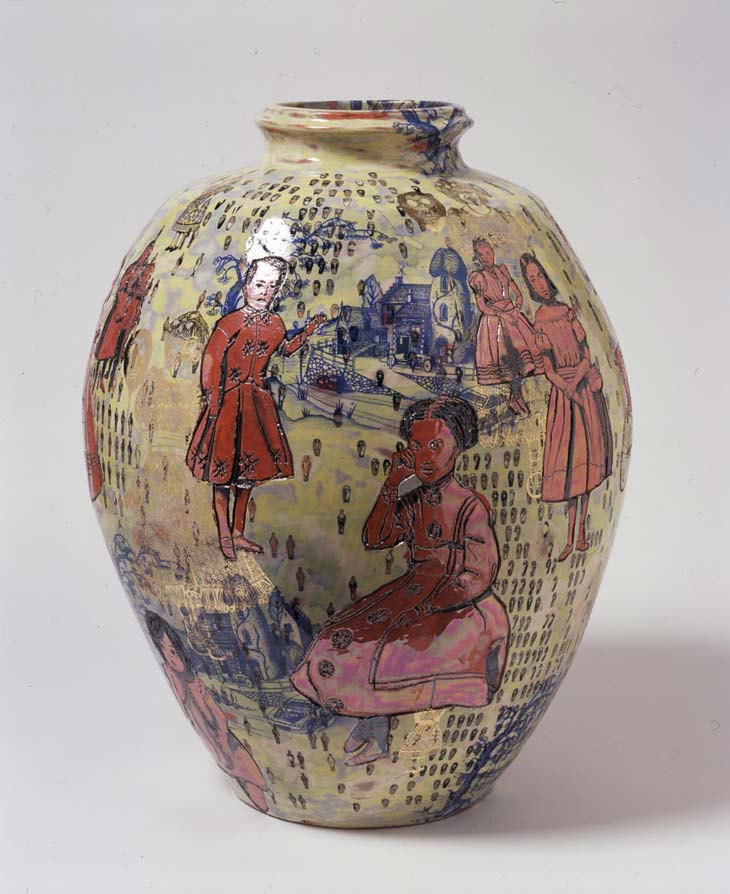
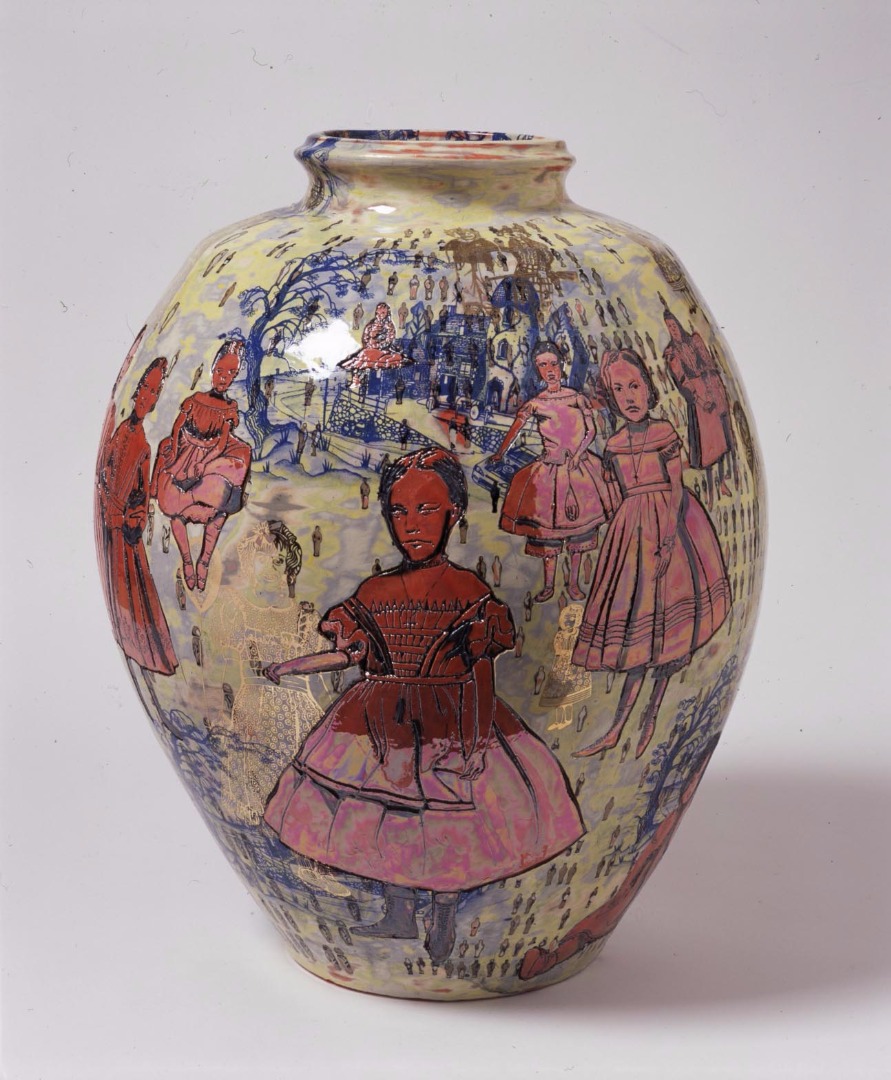
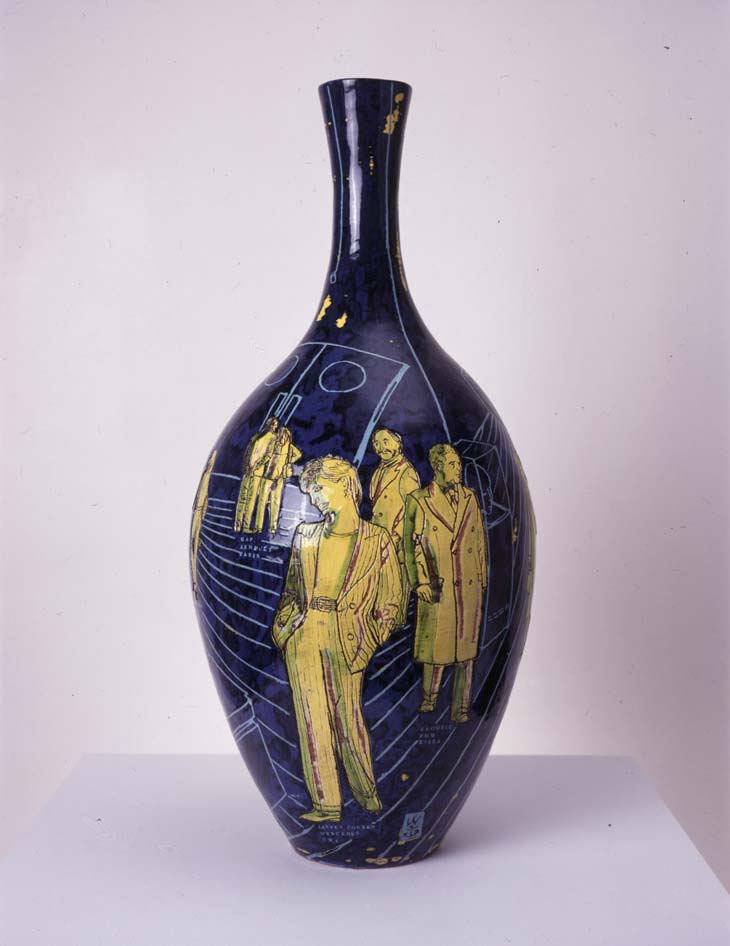
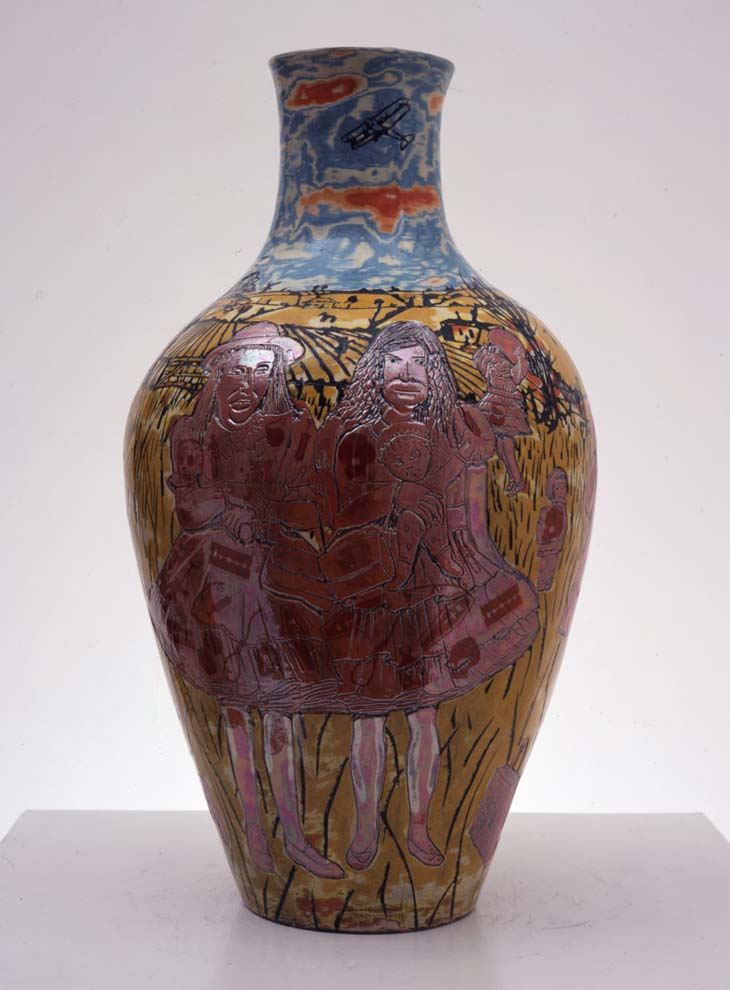

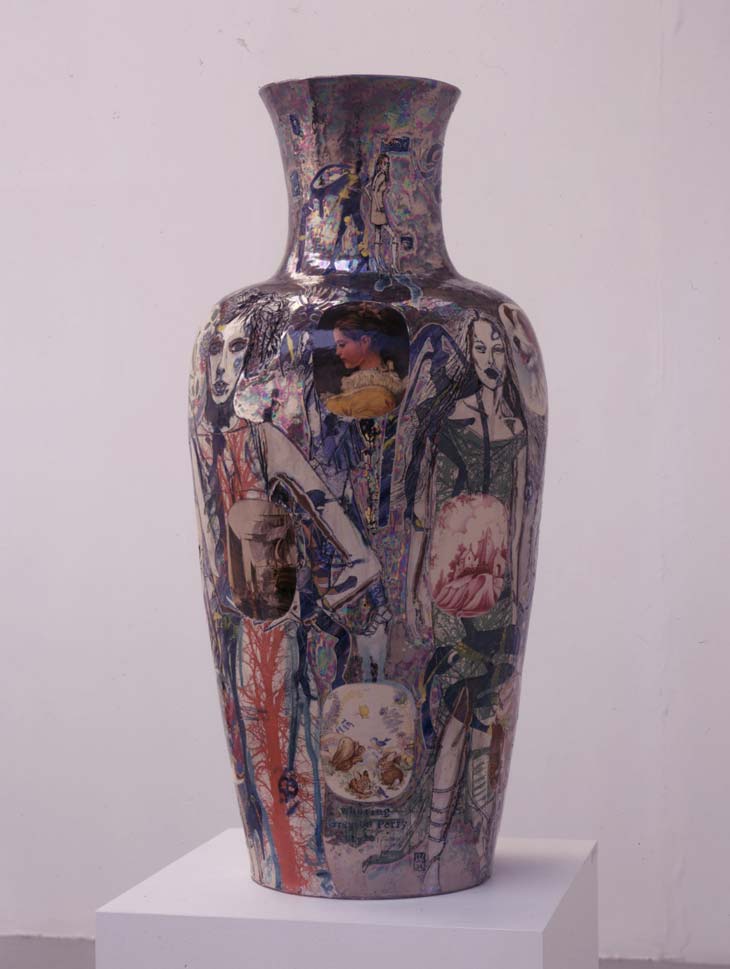
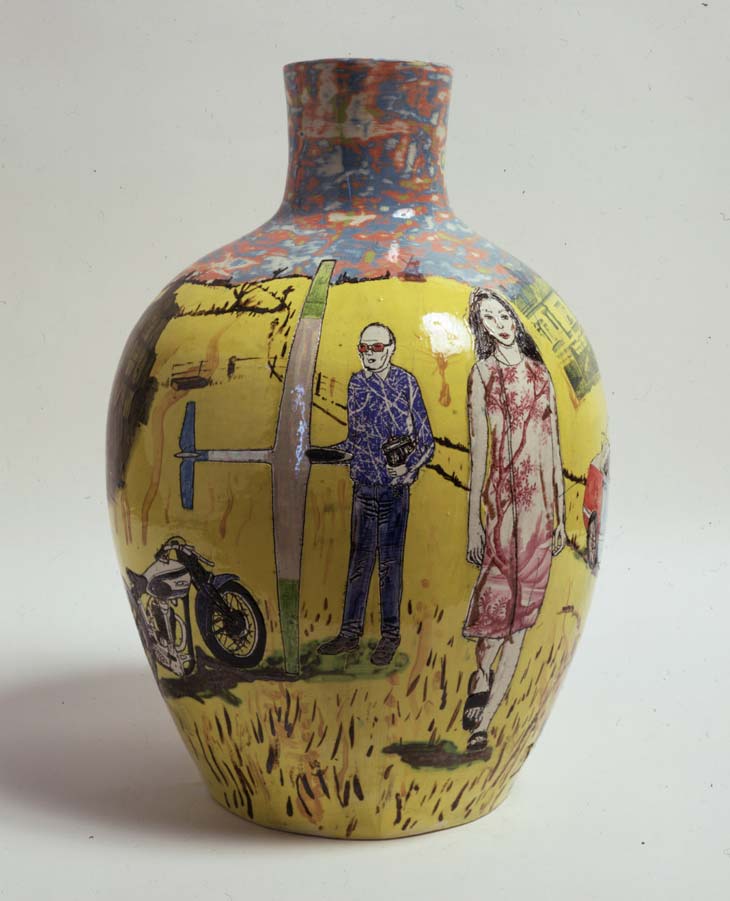
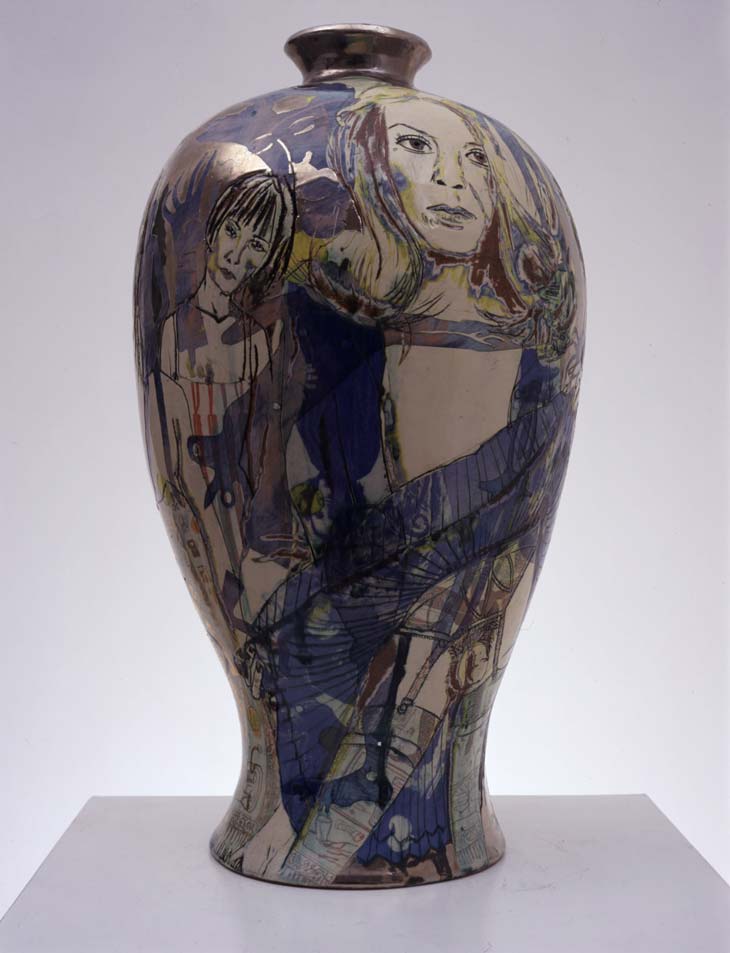

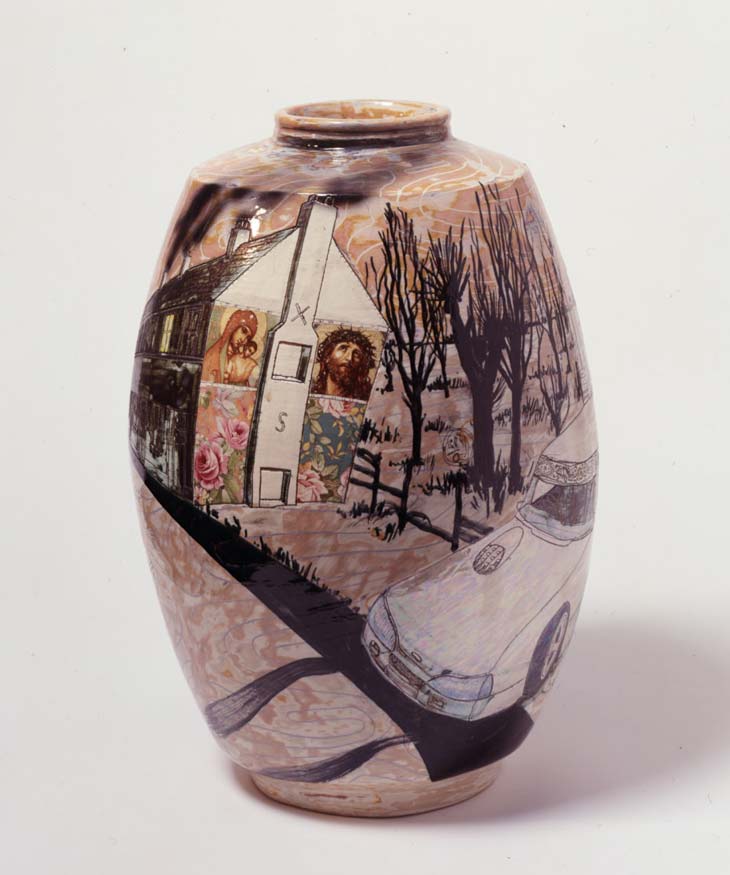

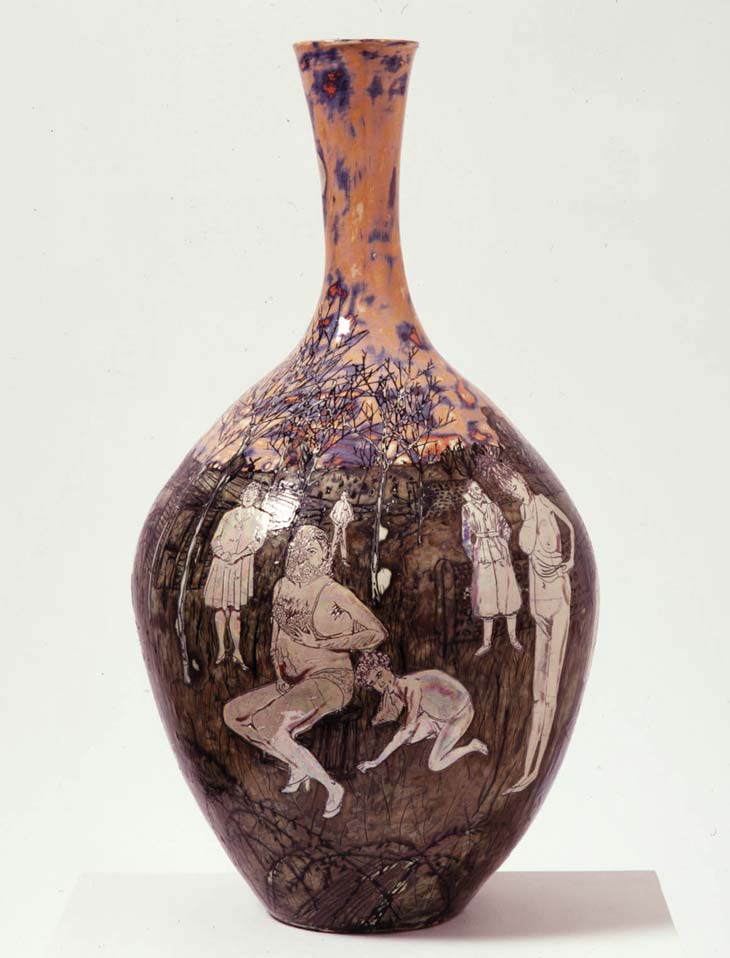
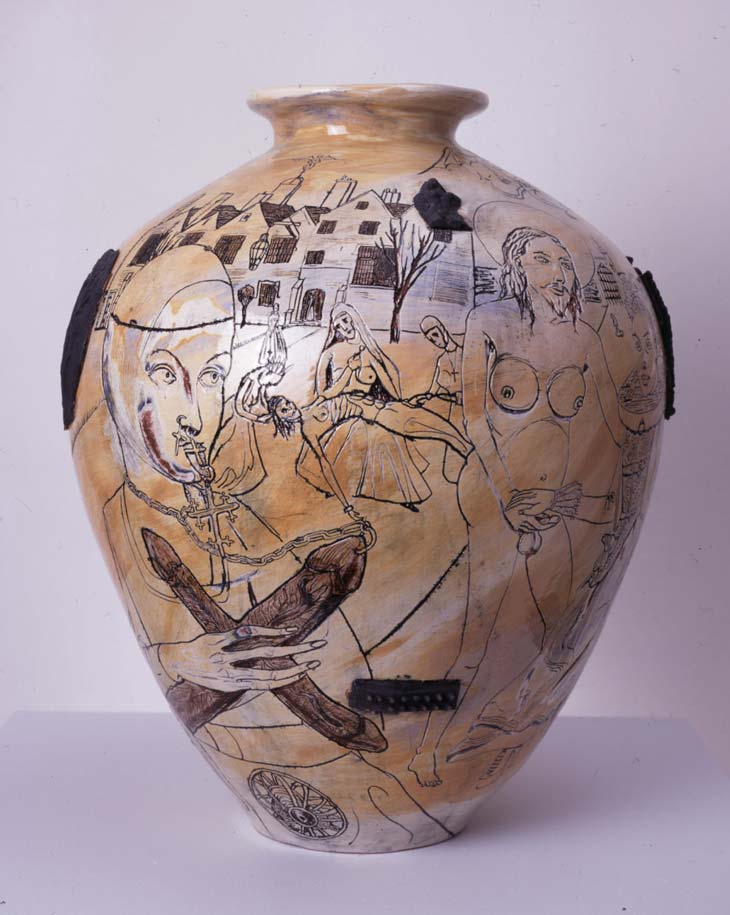
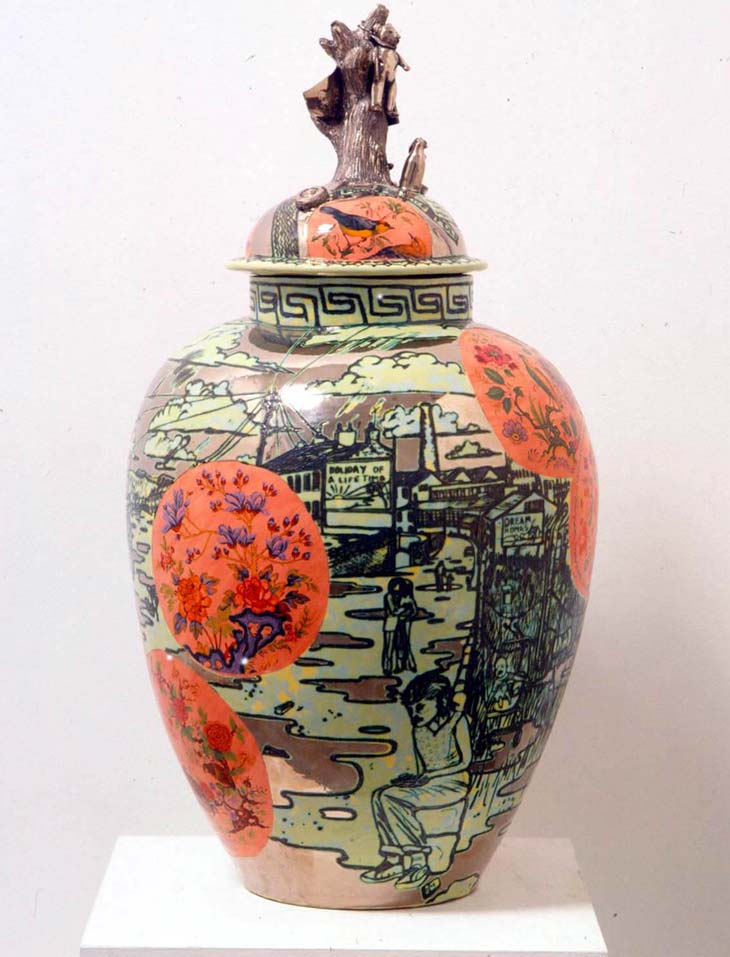
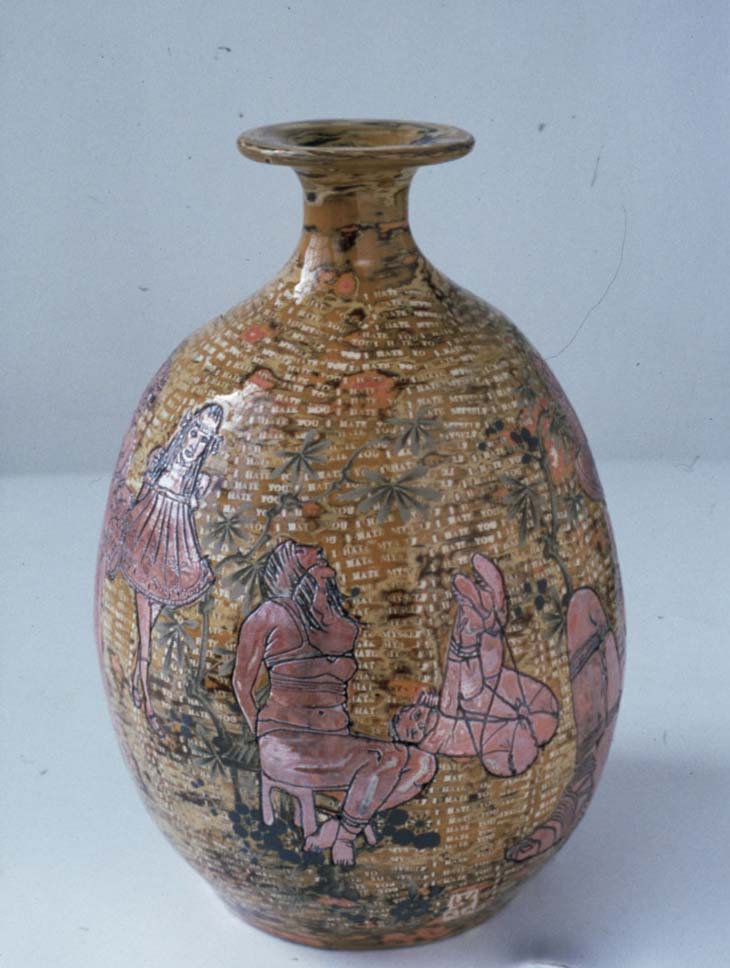
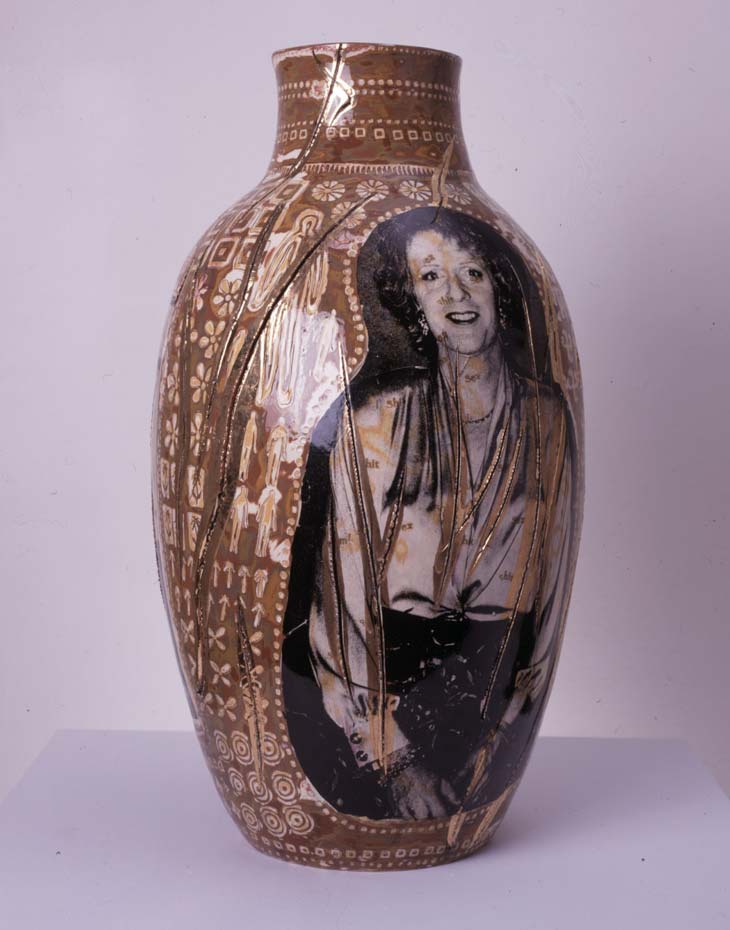

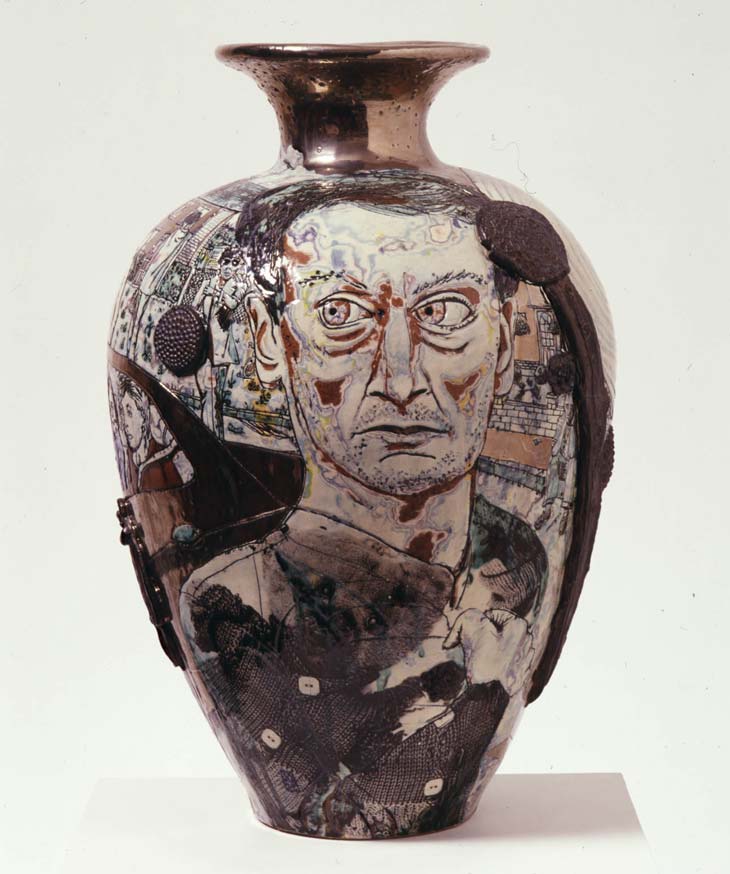
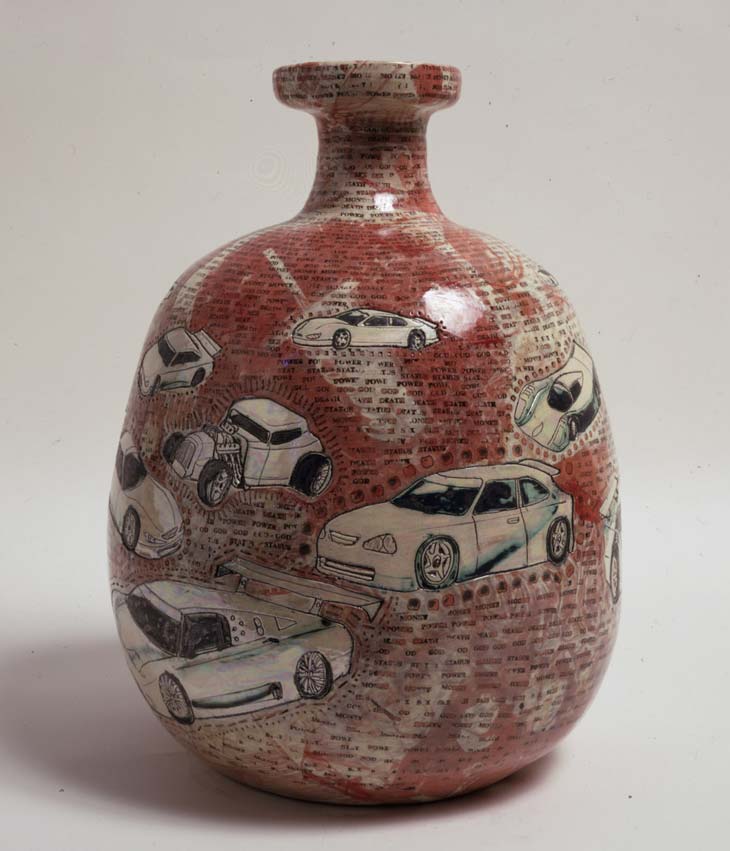
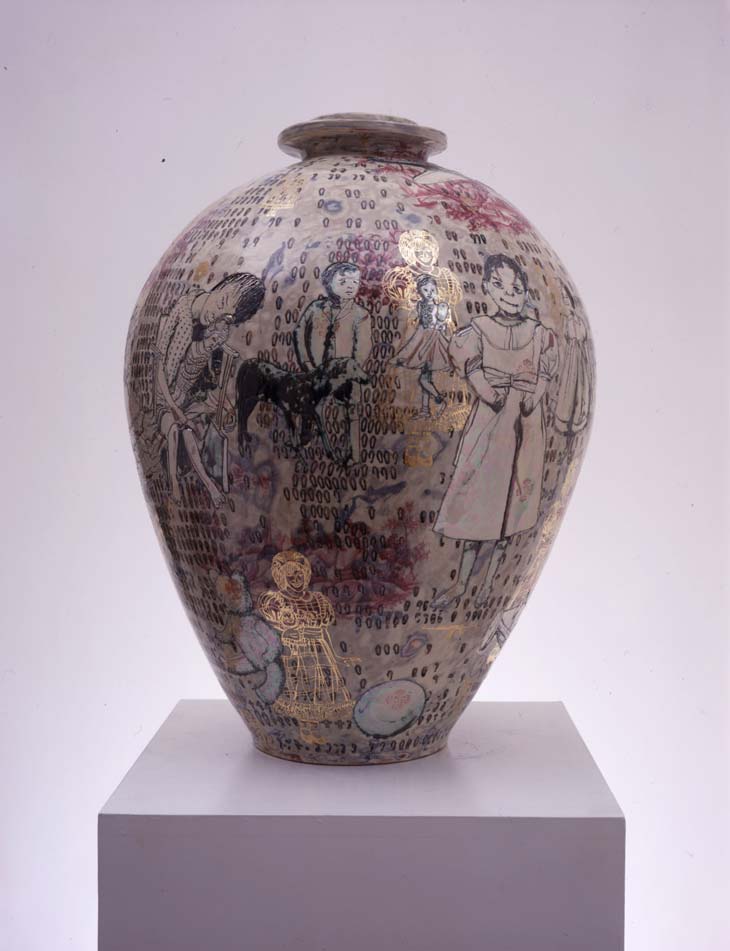
.jpg)
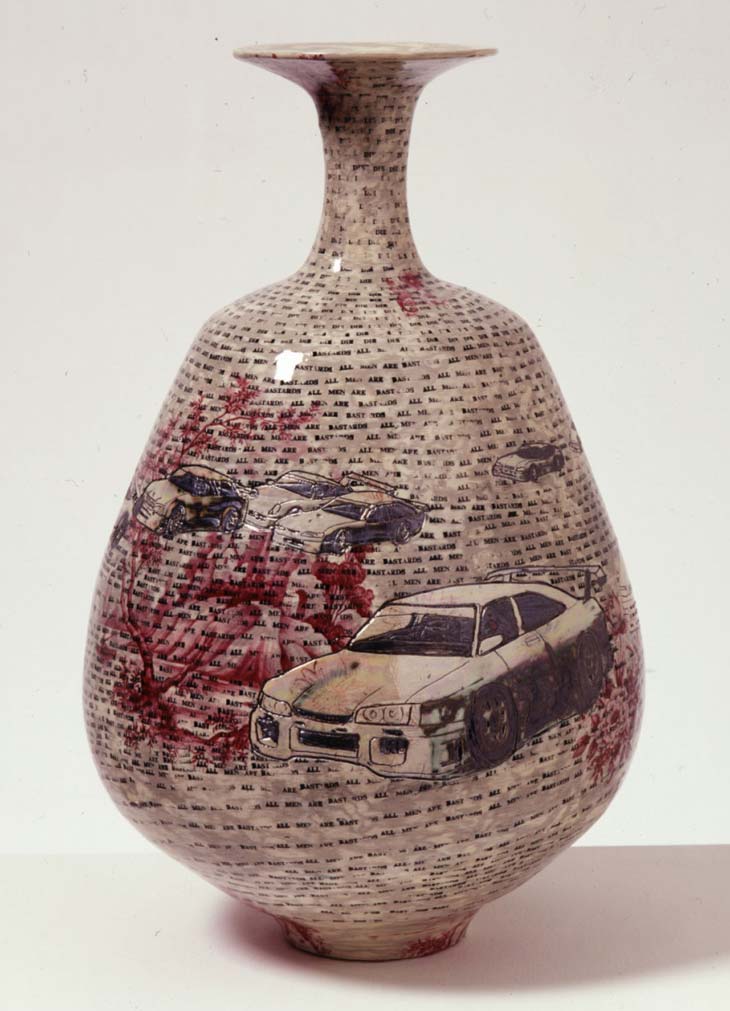

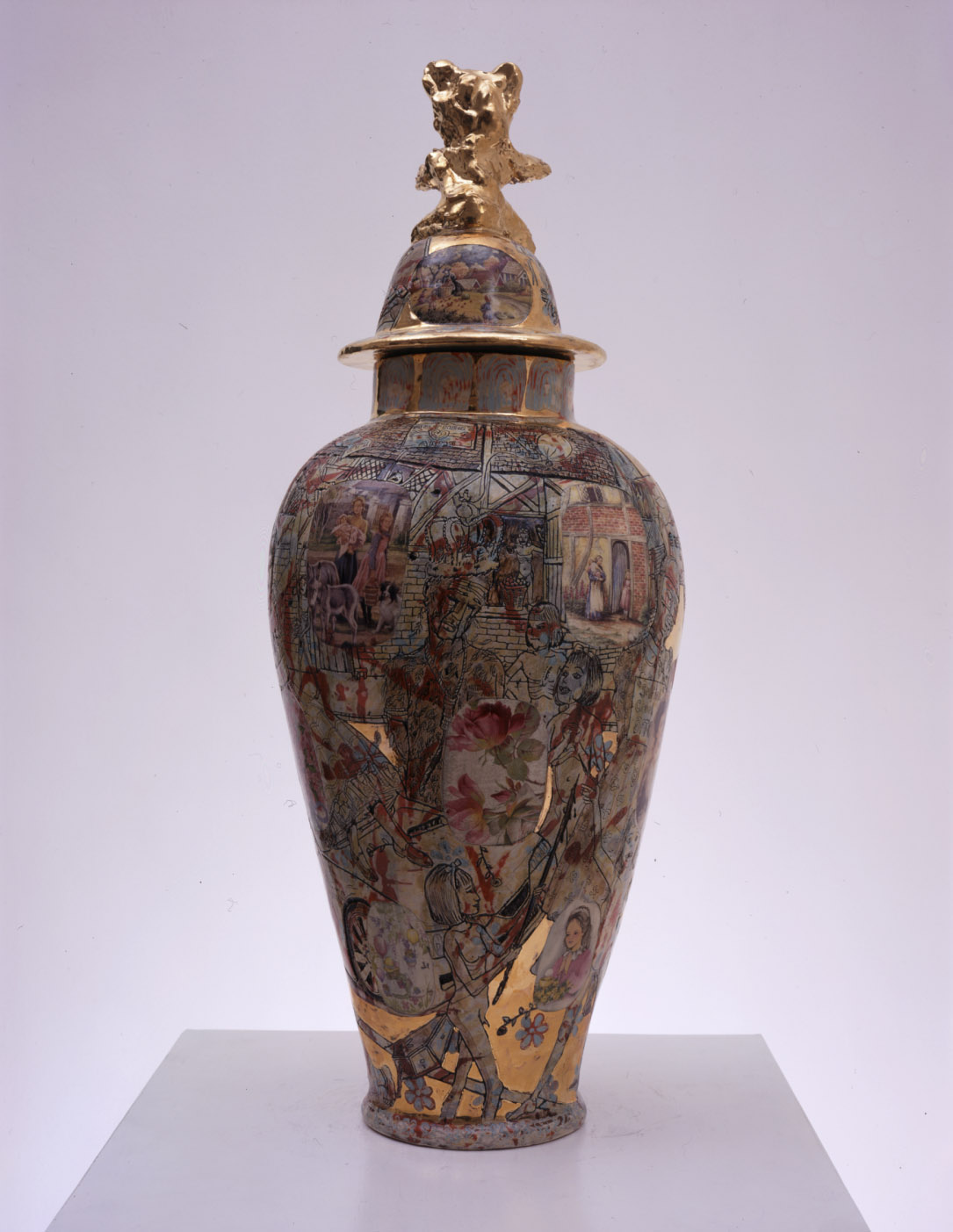
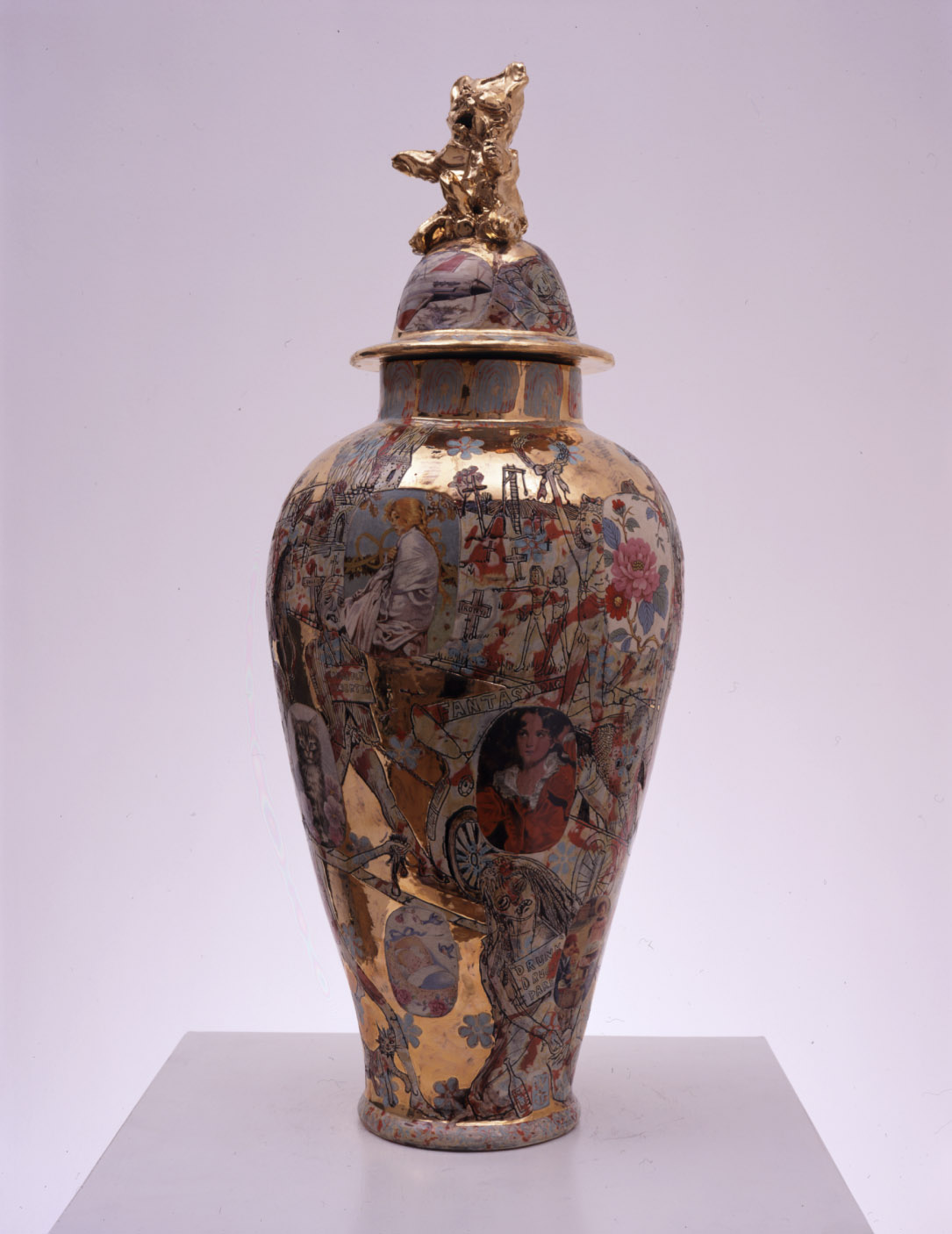
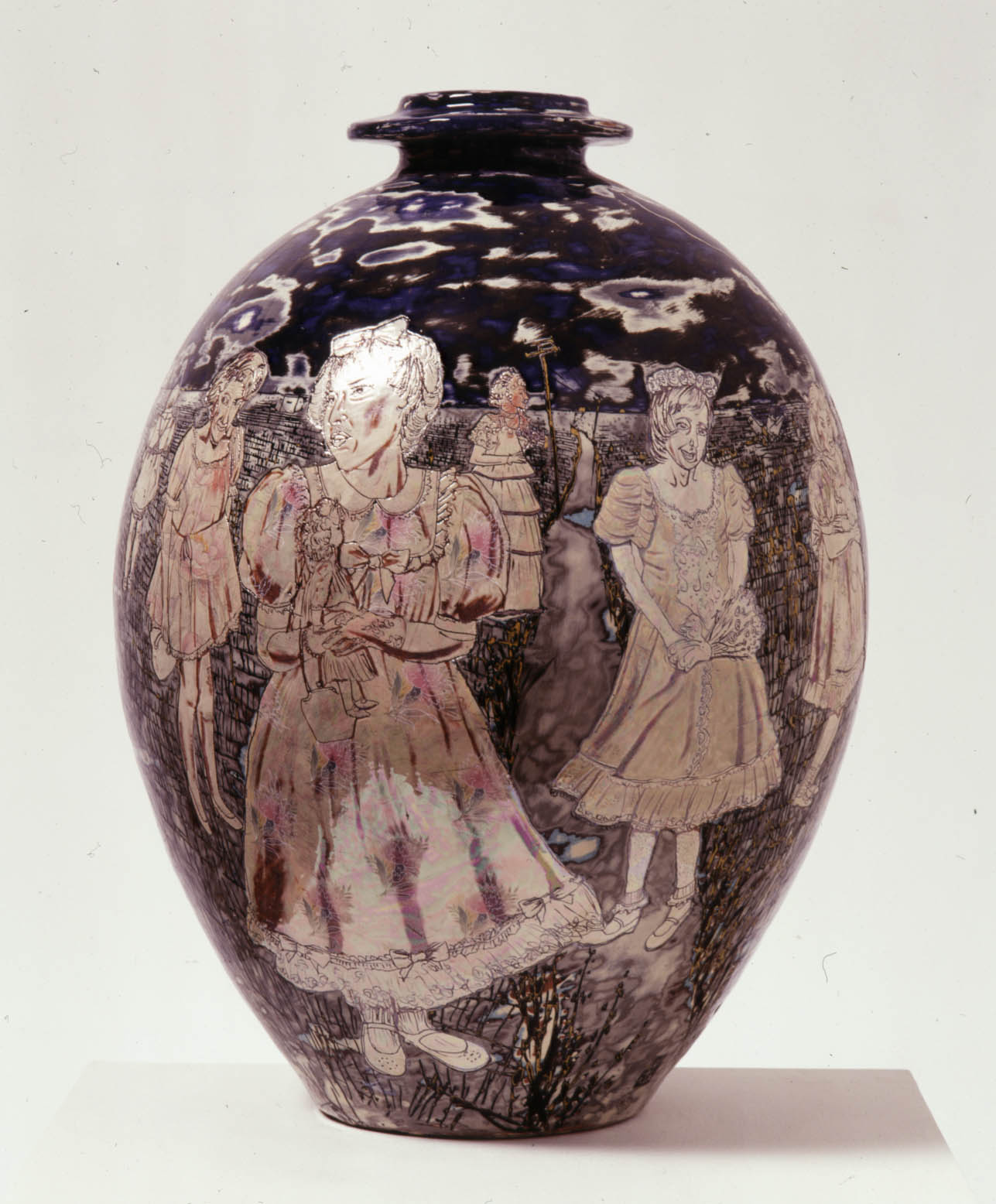

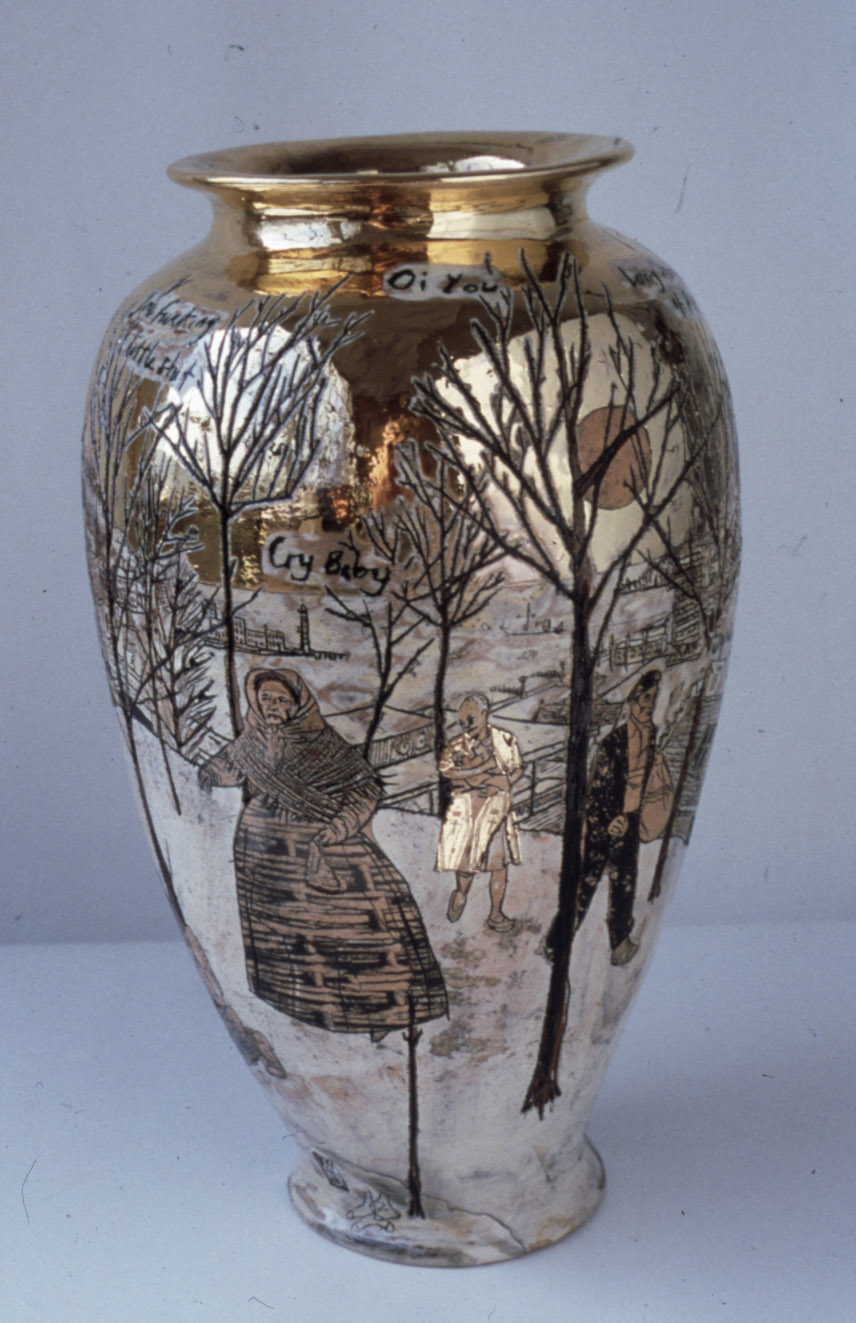
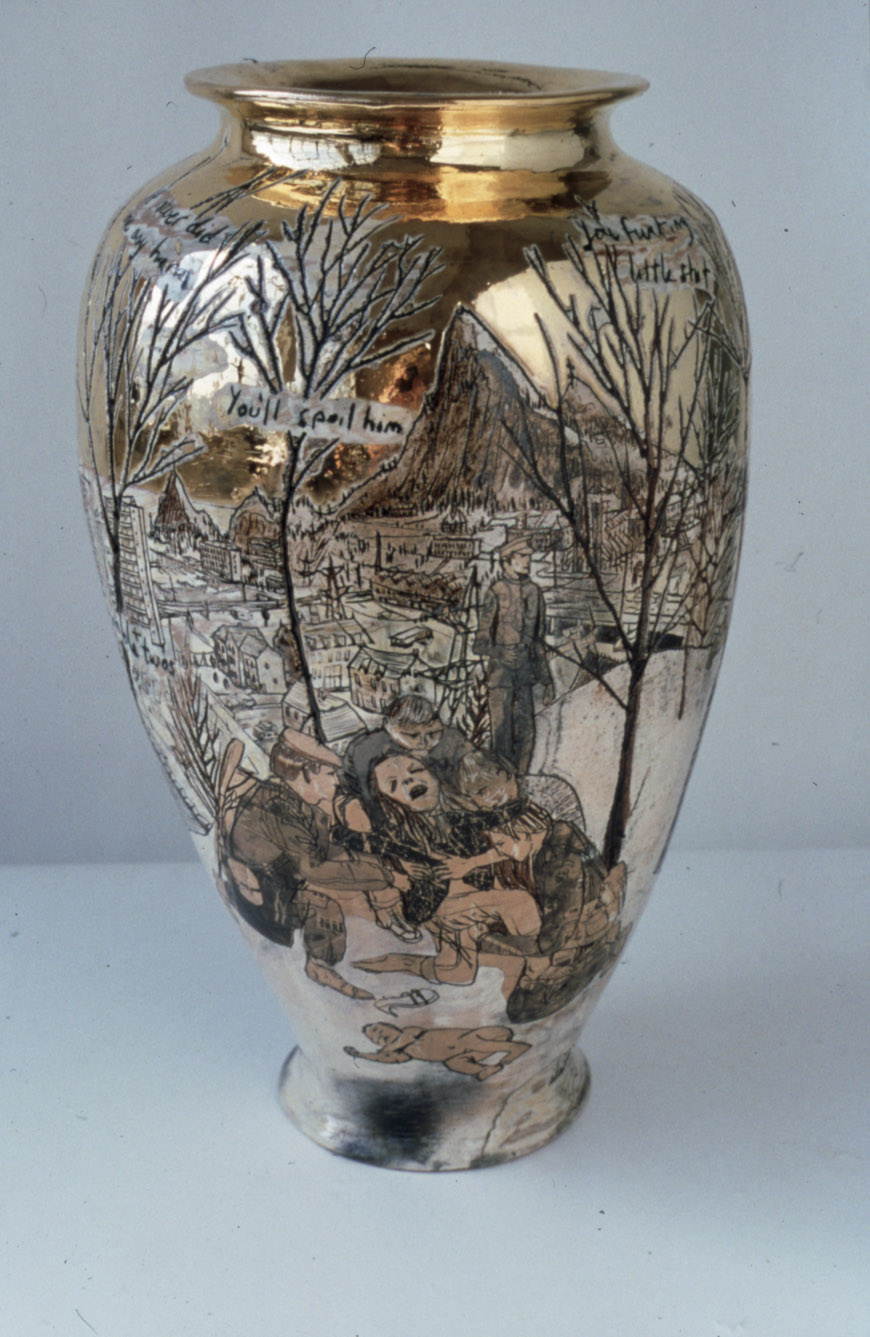
.jpg)

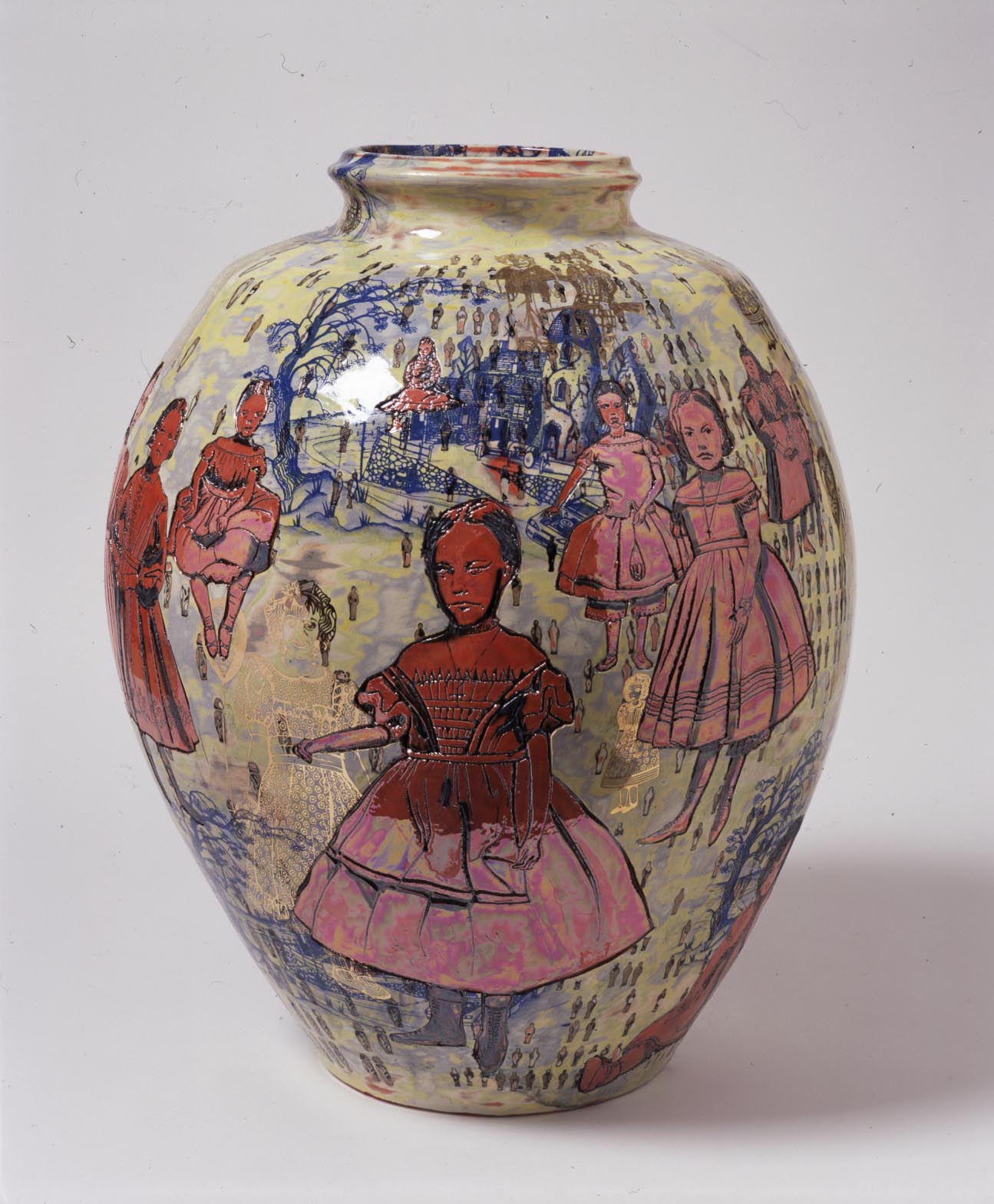
PER0023.jpg)
PER0023-1.jpg)
Grayson Perry
Perry’s urns are rendered with an incomprehensible master-craft: their surfaces richly textured from designs marked into the clay, followed by intricately complicated glazing and photo-transfer techniques. Perry makes ceramic pots, hand-stitched quilts, and outrageous dress designs, creating a cosmopolitan folk-art.
“The art world is a funny little place. It is a weird foreign country where they speak a funny language and if you want to operate in that land you have to speak that language - which is why 'craft' people don't get it sometimes.”
"I'm not an innovator, ceramic-wise. I use very traditional forms, techniques and it's merely the carrier of the message. That's how I want to keep it. But I'm always aware that it's a pot. It's not like I take it for granted. I'm always aware that I'm working on a vase and what that means"
This has the preciousness of a well-travelled Russian antique. Glazed in golds, silvers and whites, Perry’s urn tells a Gothic tale of a child’s death in a gloomy small town. The image is timeless: it could be yesterday or eighty years ago; but almost certainly it has to be Eastern European – nowhere else could such horrific grief be met with such fairy-tale romanticism.
A master of the incongruous juxtaposition, Grayson Perry scrawls savage satirical messages alongside sentiments of nostalgia for lost innocence.
The forms of the pots may be traditional, but Grayson Perry resolutely distances himself from the typical cannon of artistic ceramics.
Grayson Perry often uses found images to create a mood or a tension
Whilst depicting scenes of child abuse, bondage and sadomasochism or a gathering of society´s finest ´boring cool people´, the works remain elegant and lavish. These highly decorative objects, often covered with layers of lustre, gold leaf and sugary kitsch transfers are, by the artist´s own admission, ´perversion to match the curtains´.
Perry’s urns are rendered with an incomprehensible master-craft: their surfaces richly textured from designs marked into the clay, followed by intricately complicated glazing and photo-transfer techniques.
These highly decorative objects, often covered with layers of lustre, gold leaf and sugary kitsch transfers are, by the artist´s own admission, ´perversion to match the curtains´.
Perry reveals ‘One of the reasons I dress up as a woman is my low self-esteem, to go with the image of women being seen as second class…It is like pottery: that’s seen as a second-class thing too’.
These highly decorative objects, often covered with layers of lustre, gold leaf and sugary kitsch transfers are, by the artist´s own admission, ´perversion to match the curtains´.
People say, ‘why do you need to put sex, violence or politics or some kind of social commentary into my work?’ Without it, it would be pottery. I think that crude melding of those two parts is what makes my work.”
Winner of the 2003 Turner Prize, British artist Grayson Perry creates seductively beautiful pots that convey challenging themes; at the heart of his practice is a passionate desire to comment on deep flaws within society. Perry uses pots as narrative and figurative media, a round, curved surface for a bizarre or bitter story.
“We’re only here once and I want to get as much out of it possible. And as an artist, my job is to be as much "me" as possible.”
Grayson Perry’s urns are rendered with an incomprehensible master-craft: their surfaces richly textured from designs marked into the clay, followed by intricately complicated glazing and photo-transfer techniques.
"With ceramics, the purely decorative is its default position. But if you did a purely decorative painting, it’s still a painting but it’s within a context of contemporary art."
For Grayson Perry, this is an expression of an unrecoverable lost innocence. Pastiched with delft images of ladies in waiting, delicate flowers, teddy bears, and embossed tear-drop patterns, Perry creates a hallowed place where unhappy souls exist as golden shadows of the children they never got to be.
“In the past I’ve made more raw work that was more blatantly provocative and without so much of a social understanding of what I was doing. I think the fact that it was pottery diffused that.”
“I’m not an innovator, ceramic-wise. I use very traditional forms, techniques and it’s merely the carrier of the message. That’s how I want to keep it. But I’m always aware that it’s a pot. It’s not like I take it for granted. I’m always aware that I’m working on a vase and what that means”
“If I did something purely decorative, and I’ve approached that line a few times where I’ve looked at pieces and thought, ‘That’s pretty’, but it’s like potatoes without salt. I can’t stomach it.”
These highly decorative objects, often covered with layers of lustre, gold leaf and sugary kitsch transfers are, by the artist´s own admission, ´perversion to match the curtains´.
Perry's forms and content are always incongruous: classic Greecian-like urns bearing friezes of car-wrecks, cell-phones, supermodels, as well as more dark and literary scenes, often incorporate auto-biographical references.
The pots are covered in a kind of psychic collage replete with stark, expressionistic drawings, hand written text, stencilled lettering and photographs. Inspired by Grayson Perry’s experiences as a transvestite, his ‘little girl’ vases hint at an autobiographical referencing: his penchant for wearing baby doll dresses, and the questions of male-role models and the development of his sexuality in his childhood. Grayson Perry uses pots as narrative and figurative media, a round, curved surface for a bizarre or bitter story. “I’ve never done anything that was consciously just purely decorative. There always has to be a snag in it somewhere. It’s almost the defining characteristic of my work.†His work incorporates art history and the art world, consumer culture, scenarios of kinky sex and allusions to violence as well as images of himself, his family and his transvestite alter ego Claire. Unhappy expressions on the little girls’ faces in Golden Ghosts contrast sharply with the idyllic country cottages stenciled in the background. Perry often uses found images to create a mood or a tension – the exceptionally sad image of the seated girl is that of a child affected by the Chernobyl Nuclear Power Station disaster. This evocative work hints at a familiarity with psychotherapy, made at a time when Perry was coming to terms with his own unhappy past. Perry’s transvestite alter ego, Claire, appears outlined in gold as the ghost in the title, dressed in the elaborate embroidered Coming Out Dress, made for a performance in 2000. Melding handicraft and consumer culture, his objects are luxury one-of-a-kinds with a Rodeo Drive chic.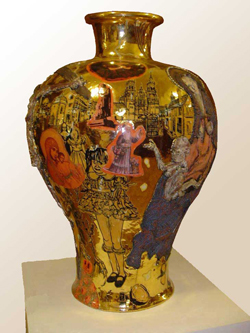

.jpg)



.jpg)







.jpg)





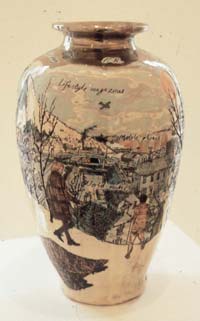



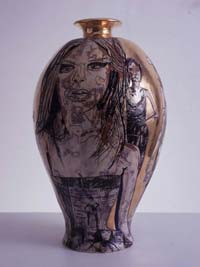






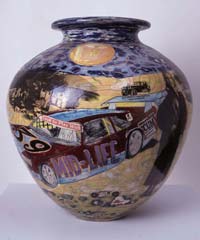



.jpg)




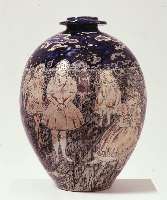


.jpg)


PER0023.jpg)
PER0023-1.jpg)